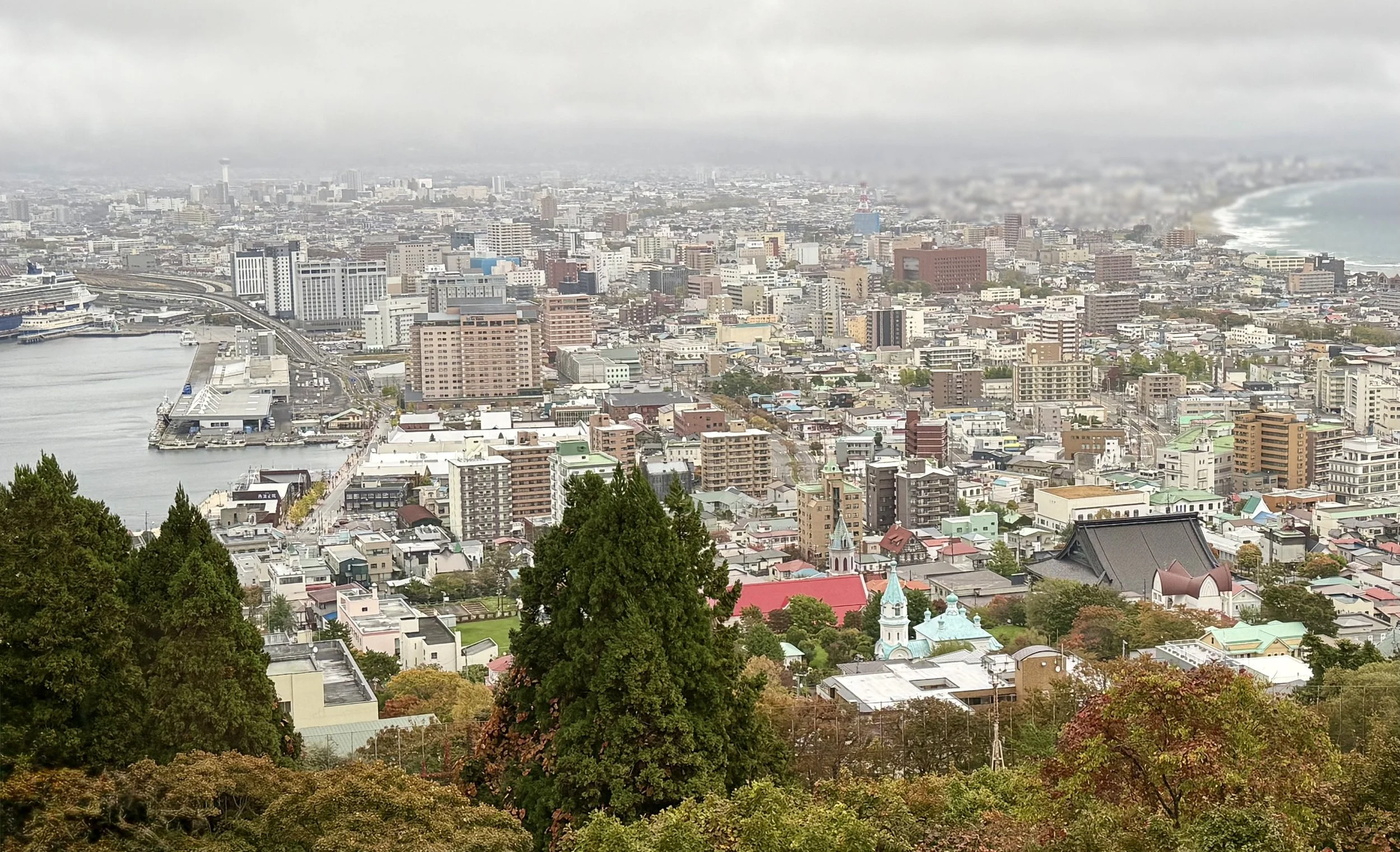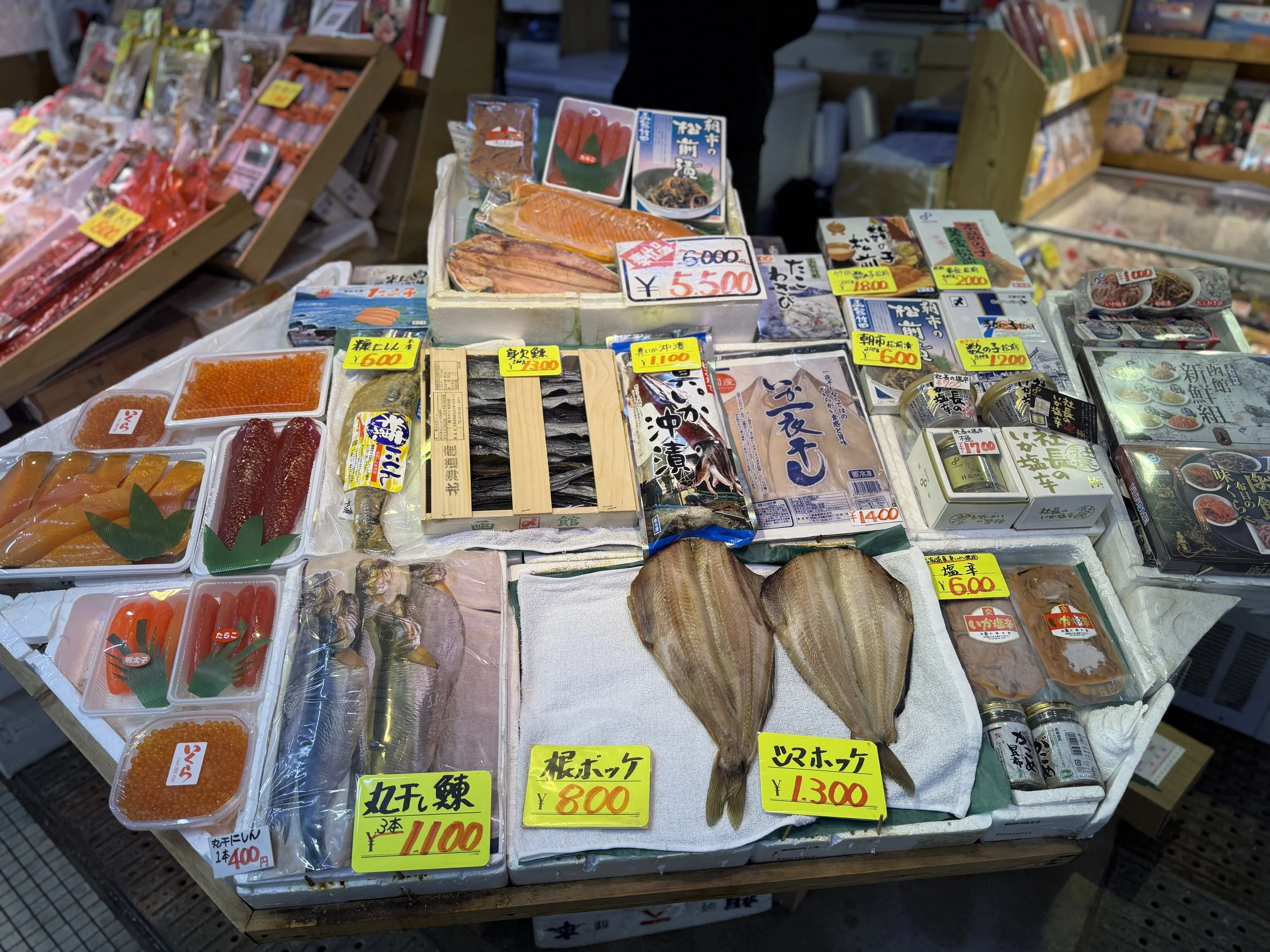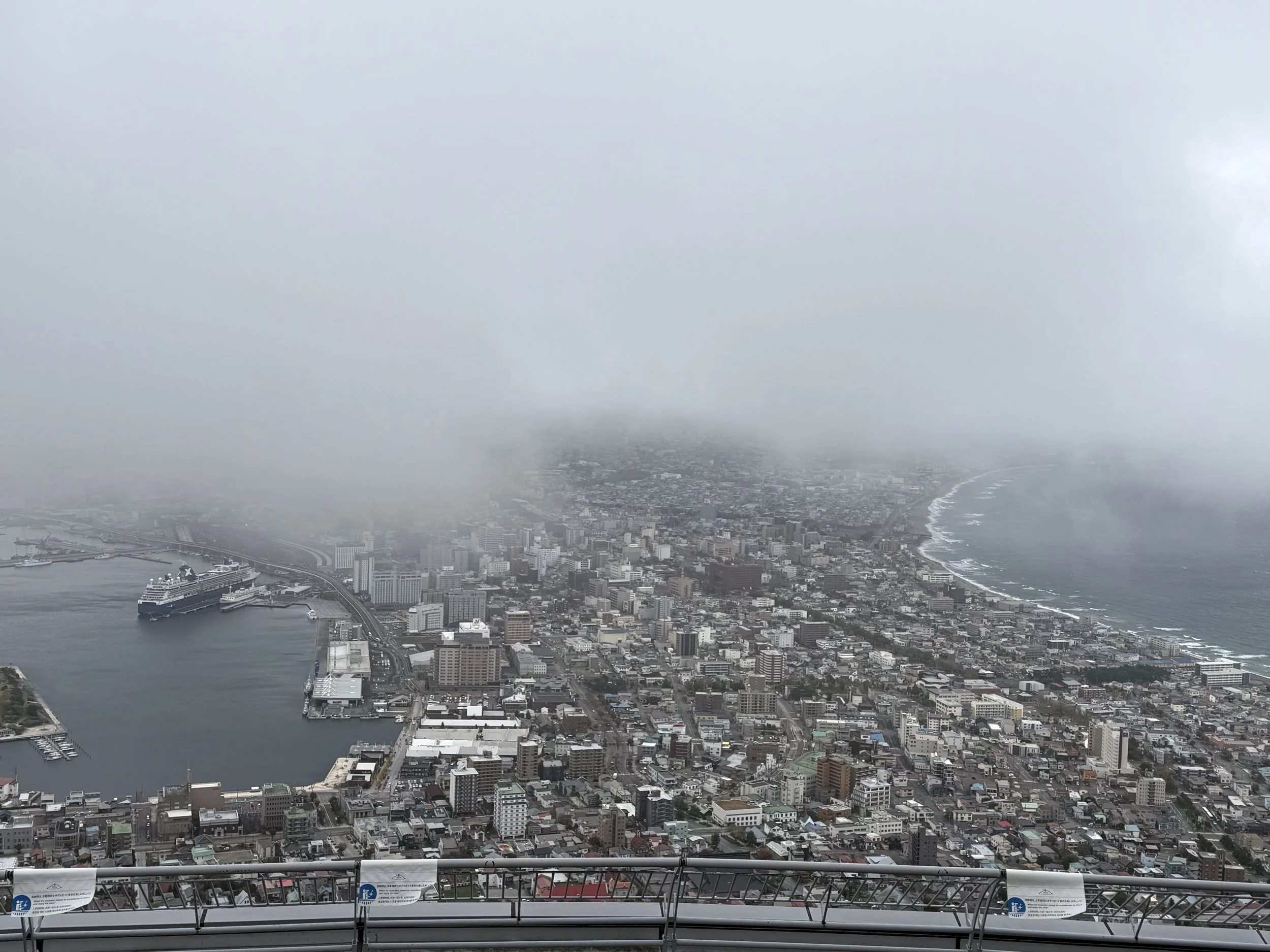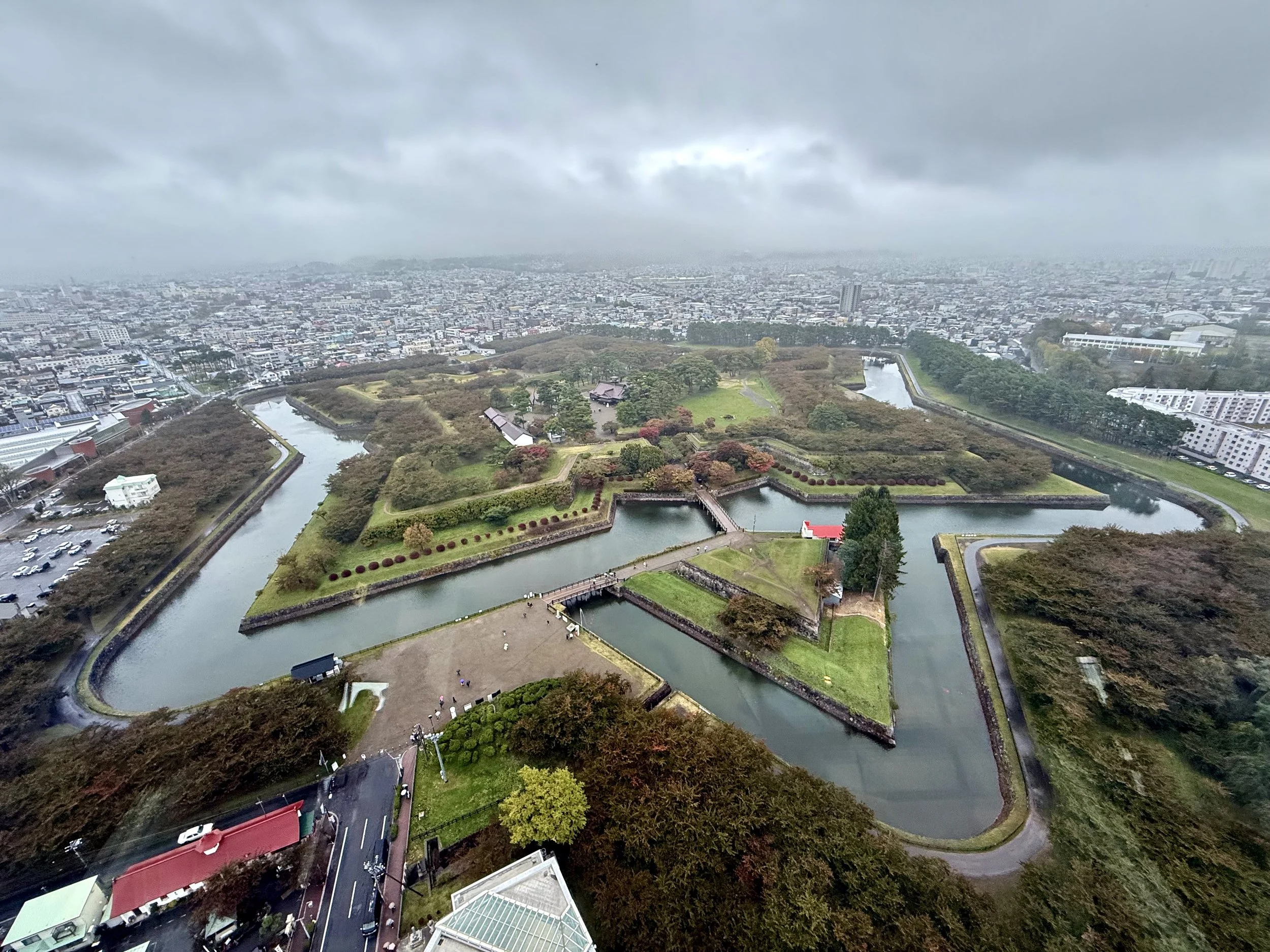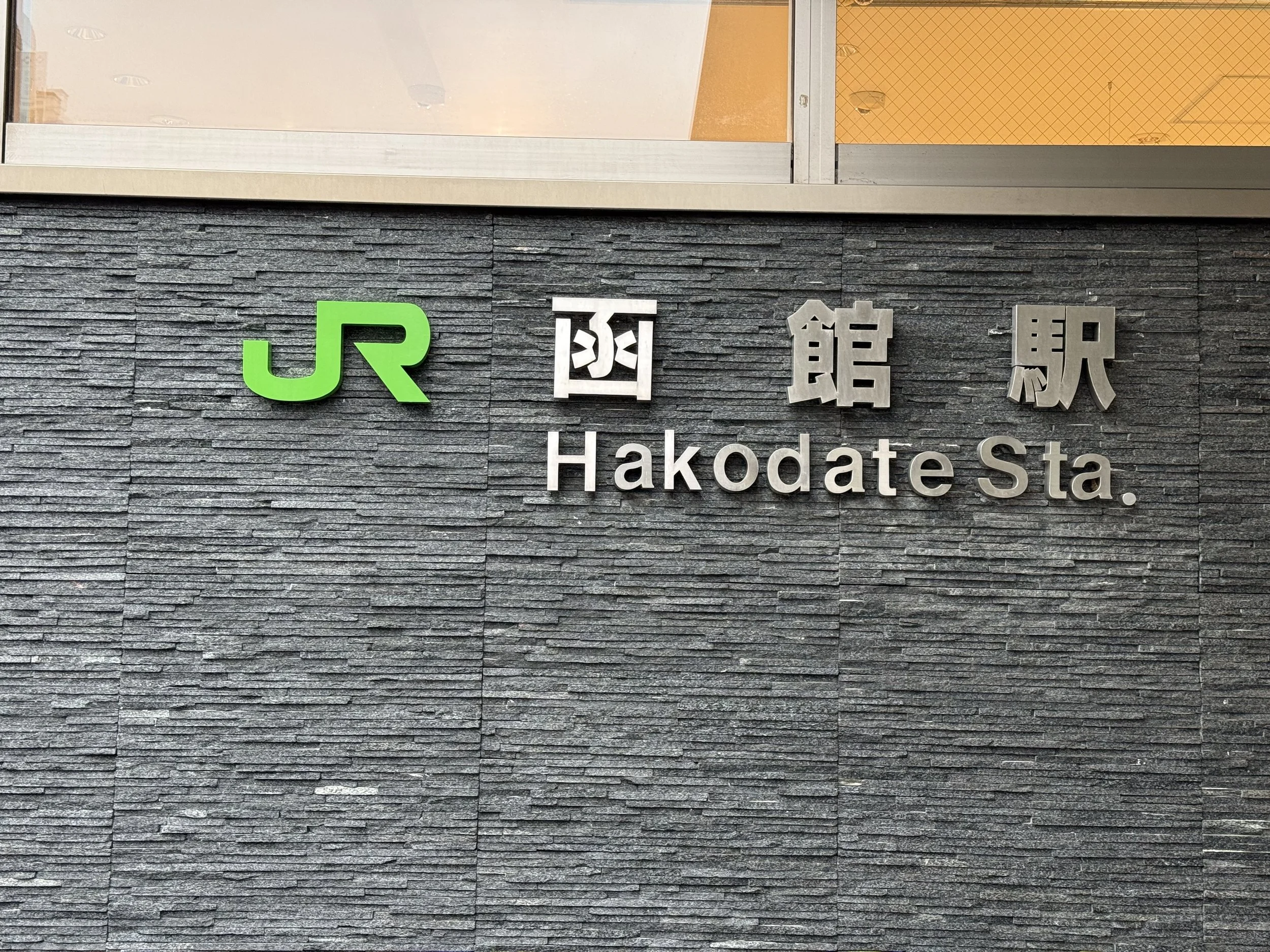Hakodate, Japan
We docked at the Hakodate Cruise Terminal on Hokkaido, Japan’s northernmost island. The forecast had called for rain, so umbrellas were recommended before we even left the ship. The gray skies that had followed us for much of this trip continued here, but Hakodate offered something new, the first signs of fall. Trees along the port and hillsides glowed with hints of orange and gold, a change we hadn’t seen in any of the other cities so far.
Hakodate sits on the southern tip of Hokkaido and has a population of roughly 250,000. It is often called “Squid Town,” a nod to its long fishing history and pride in seafood. This was the ship’s first entry point into Japan after leaving Korea, so everyone had to clear customs before getting off. The process was slow but efficient. Once cleared, we met up with our tour group by the bus for a four-hour sightseeing tour around the city.
Hakodate Morning Market
Our first stop was the Hakodate Morning Market, located just outside Hakodate Station, about a 10-minute drive from the cruise terminal. The market covers roughly four city blocks and has more than 250 stalls and small eateries.
It opens early, usually around 5:00 a.m., and winds down by noon as vendors sell out of their catch for the day. Entry is free. The main streets are filled with displays of crabs, scallops, and salmon roe, along with trays of dried seafood and boxes of local produce. There are also small indoor sections where vendors sell snacks, souvenirs, and packaged goods.
We were in port on a Sunday morning. The market was active but not crowded, and most of the shoppers seemed to be locals buying groceries. Some stalls offered samples of dried squid or melon, and the smell of the sea mixed with the freshness of fruit and vegetables. Near the center, there was a small tank where visitors could catch live squid, which was then cleaned and sliced for sashimi on the spot.
Most stalls accepted cash only, though a few of the larger seafood shops near the front displayed QR codes for mobile payments. Prices varied by vendor, but grilled scallops ran about ¥700 each, and large crabs could cost anywhere from ¥2,000 to ¥3,000, depending on size and season. The open streets made it easy to walk through and see everything without feeling rushed.
Mt. Hakodate
Next was Mount Hakodate. The ropeway was closed for maintenance during our visit, so we drove up the mountain instead. The road curved through dense forest, with short openings that revealed glimpses of the city and bay below. The view at the top was mostly hidden by clouds, but every so often the wind would move the mist just enough to uncover a partial view of the harbor and rooftops below. The strong west wind whipped across the overlook, and our guide explained that because of weather like this, Hakodate’s main streets were built unusually wide to serve as fire breaks after several major fires in the city’s past, including the Great Fire of 1934 which destroyed more than half the city.
The Mount Hakodate Ropeway usually runs from 10:00 a.m. to 10:00 p.m., with the last car going up around 9:50 p.m. Round-trip fares are ¥1,800 for adults and ¥900 for children, with one-way tickets available for ¥1,200 and ¥600 respectively. The base station is in Motomachi, about a 10-minute drive from Hakodate Station, and the summit rises 334 meters above sea level.
At the top there is an observation deck with 360-degree views of the city, a café, a souvenir shop, and an indoor seating area. The ropeway sometimes closes for annual maintenance or due to strong winds, which was the case during our visit. Mount Hakodate is best known for its sweeping night view, considered one of Japan’s top three city panoramas alongside Nagasaki and Kobe.
Goryokaku Tower
The final stop was the Goryōkaku Tower, which stands beside the star-shaped Goryōkaku Fort. The fort was built during the Edo period and later became the site of the Hakodate War in the 1860s. Admission to the tower costs ¥1,200 for adults, ¥900 for students, and ¥600 for children, with opening hours from 9:00 a.m. to 6:00 p.m. depending on the season. From the observation deck, the fort’s five-pointed layout and the moat that surrounds it were clearly visible below. Inside the tower lobby was a display showing photographs of towers across Japan, and I was happy to see that I had already visited at least three of them on this trip.
I particularly liked the uniforms of the elevator attendants. They wore black skirts and blazers trimmed with white cord, topped with matching black hats. The design was elegant and had a distinctly vintage look.
Before returning to the port, our guide, a man, mentioned that an undersea rail tunnel called the Seikan Tunnel connects Hokkaido to Japan’s main island of Honshu. He also noted that Hakodate’s local specialty is shio ramen, a clear salt-based style considered one of Japan’s oldest. The broth is light and simple, usually served with thin straight noodles and a few toppings like bamboo shoots or green onions. A bowl in town typically costs around ¥900 to ¥1,200, depending on the restaurant.
Once the tour was over, I got off the bus and walked around. I ended up at Hakodate Station, where a few food stalls were still open. I stopped in and grabbed some snacks before heading back to the ship.
It was a short visit, but the city’s mix of seafood markets, mountain views, and quiet history left a lasting impression.
Getting Around
The Hakodate City Tram is one of Japan’s oldest streetcar systems and still serves as a major way to move around the city. The lines connect many of Hakodate’s main sights, including the Morning Market, Motomachi District, Goryōkaku Park, and the base of Mount Hakodate. Fares range from ¥210 to ¥260 per ride, depending on distance, or visitors can buy a one-day tram pass for ¥600. The trams are small and frequent, running through wide streets that were rebuilt after the city’s major fires. Riding the tram is an easy, inexpensive way to see Hakodate from a local perspective, passing shops, schools, and neighborhoods at a slower pace than the cars around it.
Other Things to Do in Hakodate
For those spending more time in Hakodate, there are several places worth visiting beyond the main highlights.
The Motomachi District sits at the base of Mount Hakodate and is known for its sloping streets and Western-style buildings that date back to when the city was one of Japan’s first international ports. From there, you can walk to the Red Brick Warehouses along the bay, now filled with small shops, cafés, and souvenir stores.
The Kanemori Warehouse Area is especially popular in the evening when the lights reflect off the water. Not far away is the Old Public Hall of Hakodate Ward, a restored wooden building painted in shades of blue and gold that offers a look into the city’s Meiji-era past. Admission is ¥300 for adults.
For a quieter experience, visit the Trappistine Monastery, established by French nuns in 1898, or take a stroll through Hakodate Park, one of the city’s oldest green spaces. Both are free to enter. In spring, the park is filled with cherry blossoms, and in autumn, it shows the same fall colors we saw starting to appear around town.
If visiting in the evening, returning to Mount Hakodate for its famous night view is a must. A round-trip ropeway ticket costs ¥1,800 for adults and ¥900 for children. The view from the summit is often ranked among the best in Japan.

